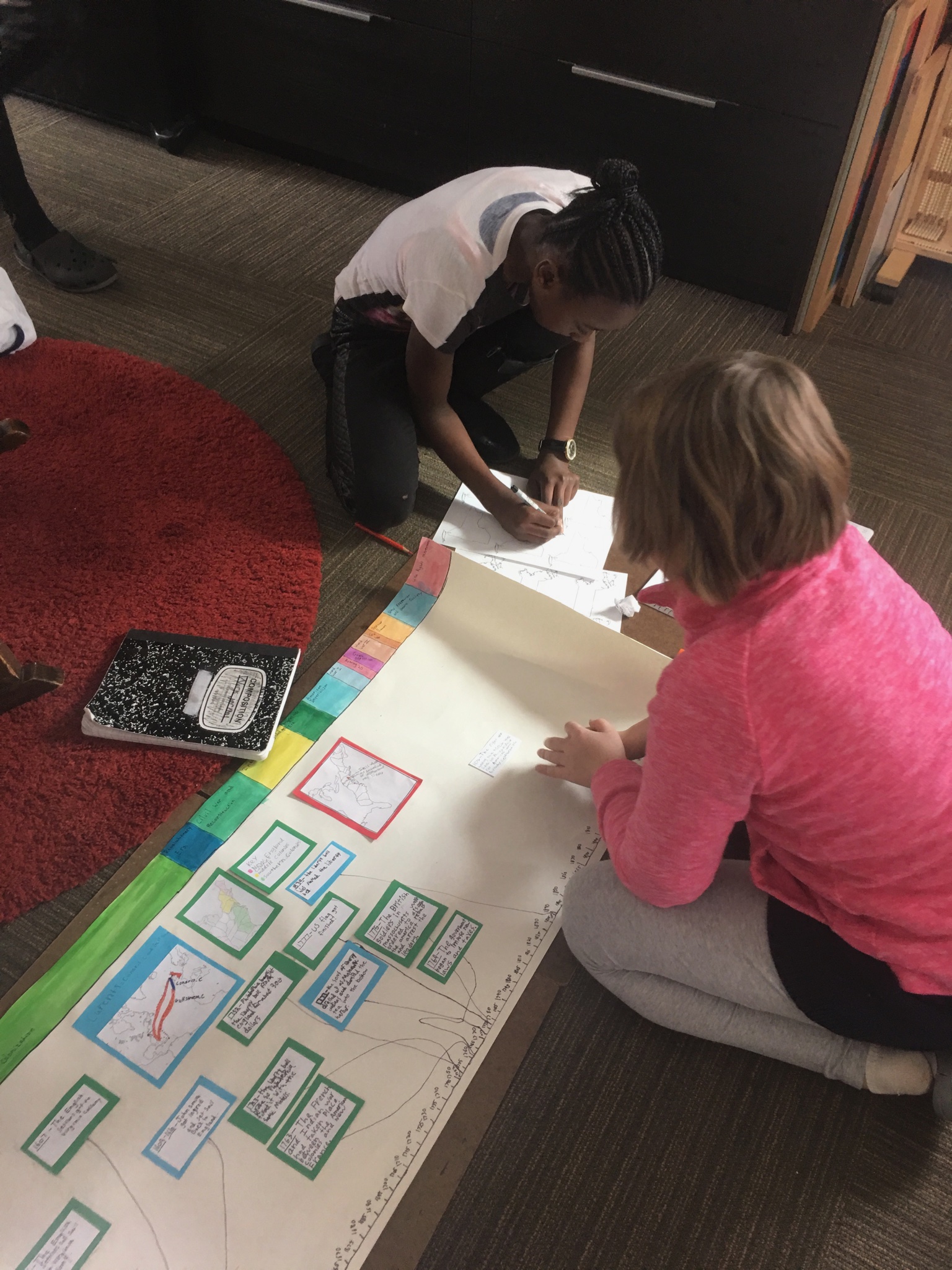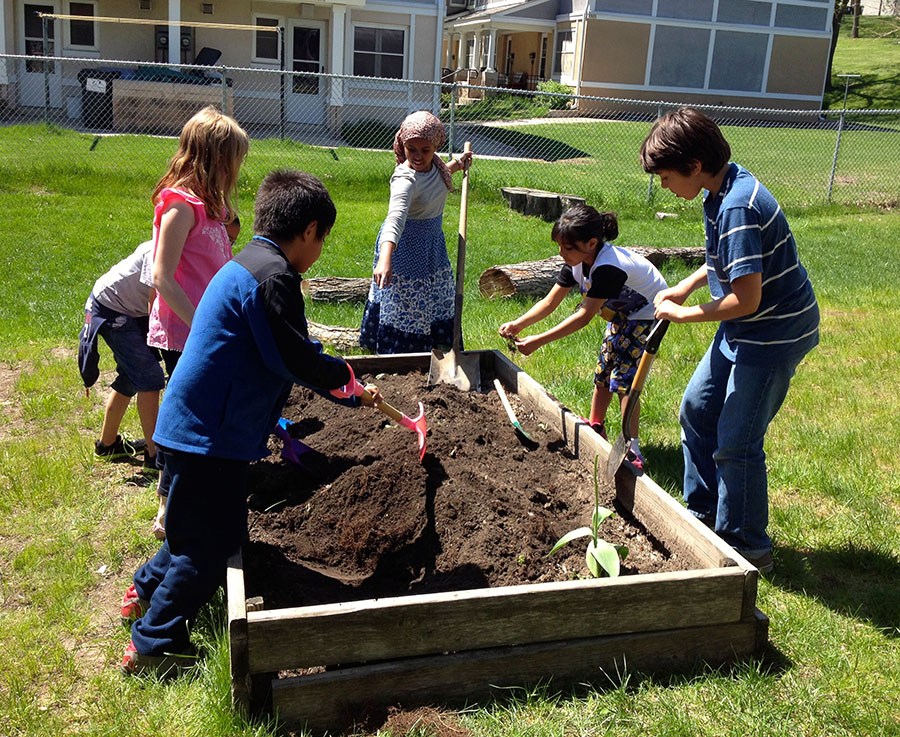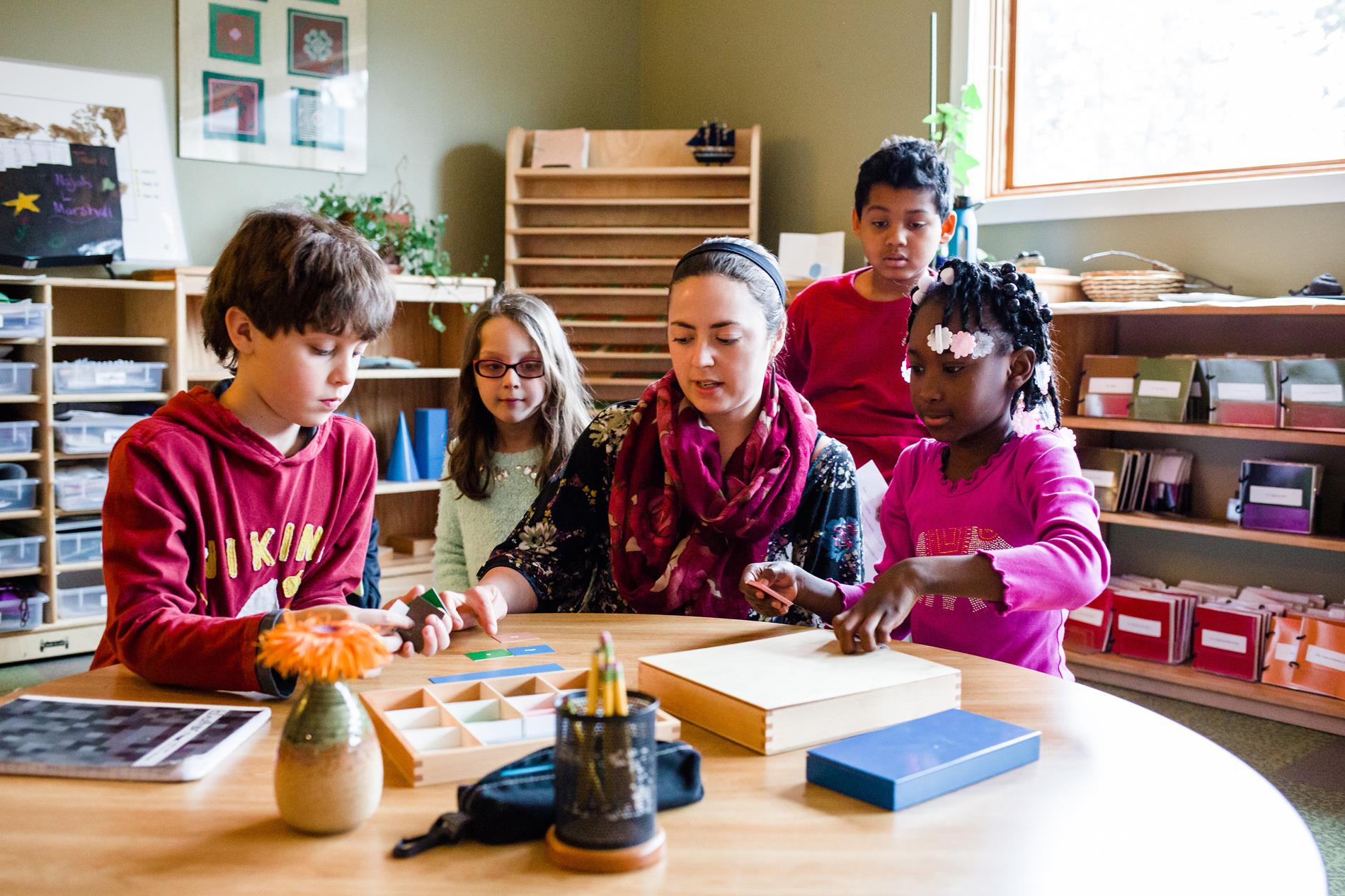Elementary (Ages 6-12)
From age six through age 12 - the elementary school years - the child is driven by a natural curiosity and tendency to explore the expansive interconnectedness within and across disciplines such as the arts, math, and social studies. Dr. Montessori used the term "cosmic education" to refer to this stage of education best fitting this period of child development. The Great Lessons are at the center of Montessori elementary education. These lessons are stories that explore the beginnings of the universe, the formation of the stars and planets, the progress of plant and animal life, the arrival of humans and language, and the origins of mathematics, geometry, and the sciences. From these stories the child develops sensitivity to the way things live, to the interdependence of life, and to the fundamental needs of human beings. Timelines, charts, and research cards of human needs help the child in independent study and inspire more research in geology, sciences, biology, geography, and history. Montessori elementary children use their imagination and reasoning minds to explore all the parts of the universe. They may be engaged in a variety of learning activities at the same time.
At the center of the Montessori elementary classroom is the well-trained Montessori teacher. This professional is an "enlightened generalist" with knowledge deep enough to know details that add to the Great Lessons and connect the details into a big picture across the disciplines. The teacher's role is to be the storyteller of our history and our world, as we understand it, to inspire the children, and then to guide them in acquiring the skills to pursue their interests and to explore the relationships among the different subject matters. This teacher is also trained in areas of child development. Because the Montessori child spends three years in the same classroom environment, the elementary teacher can be keenly tuned in to the unique personality of each child. This sensitivity permits the teacher to guide each child into areas of natural interest. The teacher or guide is in communication with the child and the family to help the child maximize his or her educational opportunities.


Much of the work of the elementary child is collaborative. The child learns in partnership with others through small group lessons and projects. At different times, each child is both a teacher and a learner. Because each child spends three years in the same classroom environment, the children have the freedom to explore subject areas as they become interested in them. The teachers, through the use of daily observation notes, lesson planning, and assessments, track each child's use of materials and progress within a subject matter. The teacher uses the child's interest to guide him or her to an exploration of all subject areas. The subjects that are covered in the Montessori classroom include mathematics, geometry, language, geography, science, art, and music.
Living in the world for the elementary child also involves working actively to make it a better place. Care of one's environment is built into the Montessori curriculum. Children are responsible for keeping the environment clean, caring for the animals, and providing for the needs of guests. CMES children will take responsibility for recycling programs in their classroom environments, help maintain the grounds and the garden, and help the school be more energy efficient.
The Montessori curriculum is developed and reviewed by an international committee and not set according to US academic standards. As a consequence, there are elements in the Montessori curriculum, such as finding the cube root of a 9-digit number, that are not part of our state or national standards; also there are elements of our Minnesota state standards, such as the study of simple machines, that are not covered by the basic Montessori curriculum. There are however, specific provisions made in the training of Montessori teachers to ensure that the state standards are met in the Montessori classroom. CMES staff will continually evaluate state standards and Montessori curriculum to ensure that children who graduate from a level (kindergarten, third, and sixth grades) have met the state required standards.
One of the guiding principles of Montessori education is the development of the whole person, with particular emphasis on the development of reason and the will, along with a lifelong love of learning. For this reason, children in a Montessori environment are expected to work at their own pace and have a major role in setting their own work schedule rather than just doing specific assignments given by the teacher. This vast amount of freedom given to the children is tempered by three very important limits: the public school curriculum, the daily work journal used by each child to track his/her progress, and frequent individual meetings between the child and the teacher. The trained Montessori teacher is expected to help each child progress through the state public school curriculum, which is available in the classroom for the children to refer to in planning their studies. As part of each child's assessment (including standardized assessments, Montessori records, the child's work journal, and Montessori teacher's observation notes), the Montessori teacher reviews with the child where the child is in terms of development within the Montessori curriculum and state standards and sets goals with the child for further development. There is also a consideration given to the developmental level of the child; that is, more of the responsibility for covering the state curriculum falls on the teacher's shoulders in the early grades with the child taking more direct responsibility as she/he matures.

